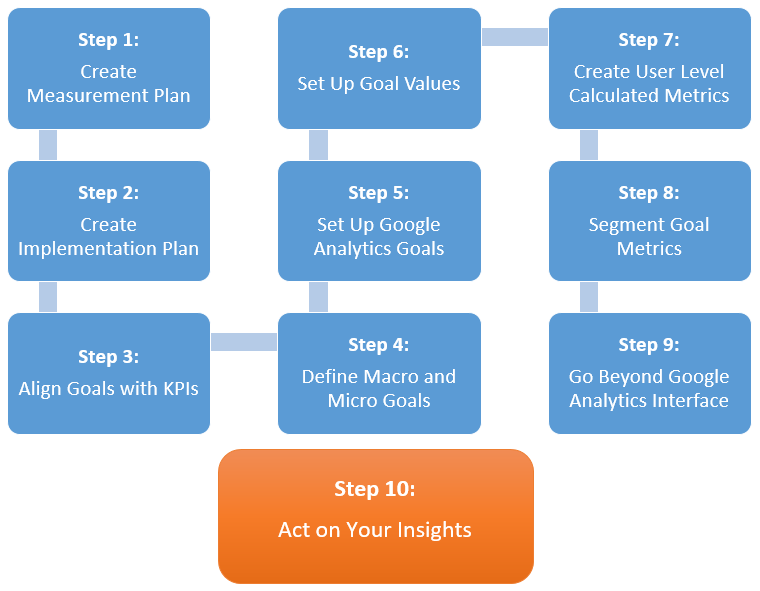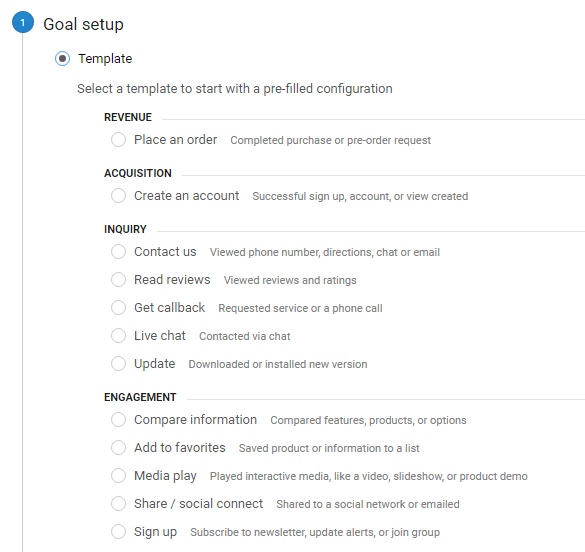Recognizing What Data Is Google Analytics Goals Unable to Track
Recognizing What Data Is Google Analytics Goals Unable to Track
Blog Article
Introducing the Blind Spots: Understanding What Google Analytics Goals Can not Measure
In the realm of electronic analytics, Google Analytics stands as an effective device for monitoring and analyzing online user interactions. Nevertheless, amidst its durable abilities, there exist blind areas that usually escape measurement. Comprehending what Google Analytics goals can not measure is essential for acquiring an extensive view of customer behavior and engagement. As we look into the details of these dead spots, we reveal a complex web of undiscovered areas that hold valuable understandings right into customer actions and motivations, difficult traditional knowledge and clarifying the restrictions of our data-driven understanding.
User Habits on External Platforms
Recognizing how customers engage on outside systems is important for enhancing online approaches. External systems, such as social networks networks, referral web sites, and online discussion forums, play a significant role in driving website traffic to a company's web site. By analyzing individual actions on these systems, businesses can gain beneficial understandings right into the efficiency of their advertising and marketing initiatives and the choices of their target market.
One secret facet of user habits on exterior platforms is the recommendation resource. By tracking where the users are coming from, businesses can recognize which systems are driving the most traffic to their site. This details can aid companies allot their resources a lot more properly, focusing on the platforms that produce the finest results.

Offline Conversions and Communications
Assessing individual behavior on exterior platforms provides beneficial insights right into on the internet techniques; however, taking into consideration offline conversions and communications is equally crucial for a comprehensive understanding of a firm's general efficiency. Offline conversions, such as in-store purchases or phone questions, play a considerable function in numerous organizations' success.

Acknowledgment Beyond Last Click
When diving right into the realm of digital advertising and marketing analytics, it becomes important to look past the solitary touchpoint of the last click for a much more thorough understanding of attribution. While Google Analytics offers useful understandings right into customer behavior, relying exclusively on last-click acknowledgment can be restricting - what data is google analytics goals unable to track. Acknowledgment models that go beyond the last click use an extra nuanced sight of the consumer trip, taking into account all the touchpoints that lead to a conversion
Attribution beyond the last click permits marketing professionals to designate credit to various communications along the conversion course, giving a more clear photo of the efficiency of different advertising channels. By discovering multi-touch acknowledgment versions such as direct, time decay, or position-based attribution, businesses can much better designate their advertising spending plans and maximize their approaches for optimal impact.
Recognizing the impact of each touchpoint in the conversion process is essential for making informed decisions and optimizing ROI. By about his welcoming attribution past the last click, services can acquire much deeper insights into client behavior and tailor their advertising efforts a lot more successfully.
Cross-Device and Cross-Browser Tracking

In a similar way, cross-browser tracking complements cross-device tracking by catching customer actions as they switch in between different internet internet browsers. Recognizing how users interact with sites on different internet browsers can aid online marketers enhance their on the internet experiences to make sure consistency and functionality across different platforms.
Qualitative Data and User Intent
Comprehending individual intent with qualitative data evaluation is crucial for developing targeted digital marketing strategies that resonate with the needs and choices of the target audience. Qualitative data provides understandings right into the 'why' behind customer activities, dropping light on motivations, emotions, and choices that quantitative data alone can not catch. By evaluating individual feedback, remarks, and communications, online marketers can discover important information about customer intent, enabling them to tailor their messaging, content, and offerings to much better straighten with what their target market is seeking.
Qualitative information also aids in understanding the context in which customers engage with a website or app. This contextual understanding makes it possible for online marketers to produce more tailored and pertinent experiences, ultimately driving greater engagement and conversion prices. By delving into individual intent through qualitative information analysis, businesses can get a deeper understanding of their target market, resulting in more efficient marketing approaches that satisfy customers' assumptions and needs.
Verdict
To conclude, Google Analytics goals have restrictions in measuring individual actions on outside systems, offline conversions, attribution beyond last click, cross-browser and cross-device tracking, and qualitative information related to individual intent. what data is google analytics goals unable to track. It special info is essential for services to be familiar with these blind areas in order to supplement their information analysis with various other devices and methods to get an extra extensive understanding of their target market and boost their overall electronic advertising approaches
By examining customer behavior on these platforms, companies can obtain valuable insights right into the performance of their marketing efforts and the preferences of their target audience.
Examining individual habits on external systems provides important insights right into on-line techniques; nonetheless, thinking about offline conversions and communications is similarly vital for a detailed understanding of a firm's total efficiency.In digital marketing analytics, moving beyond last-click attribution to explore cross-device and cross-browser tracking is important for acquiring a holistic understanding of user interactions across numerous systems and tools. By assessing customer comments, remarks, and communications, marketers can reveal important info concerning customer intent, enabling them to tailor their messaging, material, and offerings to much better line up with what their audience is looking for.
By diving right into user intent via qualitative information analysis, companies can gain a much deeper understanding of their target audience, leading to extra efficient advertising and marketing methods that meet customers' demands and assumptions.
Report this page